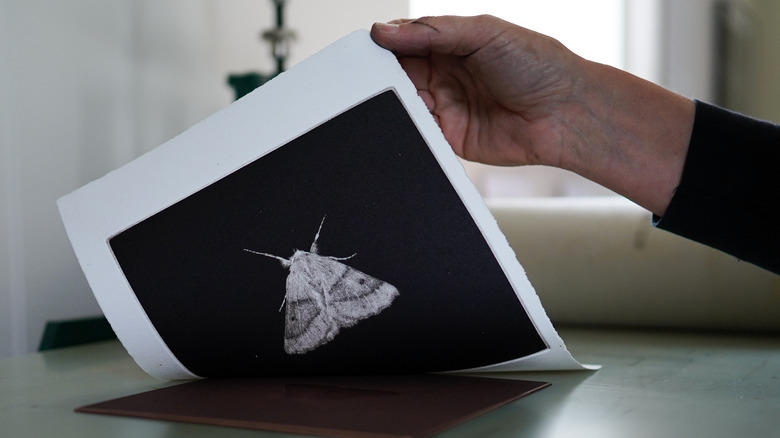Why The Rediscovery Of A Moth Species After 110 Years Has Scientists Seriously Worried
More than once in the history of science, a living organism has been found and identified decades, centuries, or even whole epochs after it was believed to have gone extinct. In perhaps one of the most famous examples, a type of fish known as the coelacanth was believed to have gone extinct 65 million years ago, according to National Geographic. That is, until a South African fisherman caught one on his line in 1938, completely rewriting this particular chapter of the evolutionary textbook. Similarly, in 2019, researchers in Rwanda found a species of bat that they believed had gone extinct four decades before.
In May 2022, as the New York Post reported at the time, a few specimens of a moth species in the Pyralidae genus turned up at a Detroit airport. The finding was important for two reasons. First, though there had been no official declaration that the species was extinct, it was certainly the first time anyone laid eyes on it in over a century. And second, the moth is native to its particular corner of Oceania and not the Detroit area, where, if it had gotten loose, it could have become yet another invasive species wreaking havoc on local ecosystems.
A Pyralidae Moth Turns Up In Detroit
In May 2022, KSBY reported an incident that had taken place at Detroit Metropolitan Airport (pictured above) "this spring," meaning that it may have happened weeks or even months earlier. Customs and Border Protection agents inspected a bag belonging to a traveler from the Philippines and noticed holes in the luggage consistent with insects boring through them. Inside the bag, agents found seeds that the traveler claimed were to be used for making medicinal tea, but according to the New York Post (which claims the incident took place in September 2021), agents intercepted the seed pods and sent them away to be further studied.
As it turns out, the pupae in the seeds turned out to be "very flashy" moths (per KSBY), and when a Smithsonian entomologist was sent in to identify them, the insects were determined to belong to a family of moths known as Pyralidae. This was the first time any such creatures were identified, collected, and studied since they were first reported on, all the way back in 1912 in Sri Lanka.
Why Officials Are Glad They Caught It
Authorities are quite pleased they caught the moths before the traveler was able to leave the airport with them. Not because their discovery is going to rewrite entomological history, but because a disaster was likely averted.
You will read, from time to time, about so-called "invasive species." Whether through good intentions or simple carelessness, species of plants, animals, and other organisms have been introduced into environments where they have no natural predators and can spread unchecked, decimating ecosystems in the process. For example, the Mississippi River is currently bedeviled by the invasive Asian carp, a fish that has no natural predators in the area and is eating the same foods that birds in the river system feed on, destroying local populations.
In the case of the moths, as a nonnative species, they could easily destroy forests and crops here in the U.S., according to KSBY. "This discovery is a testament to the important mission of identifying foreign pests and protecting America's natural resources," said a Customs and Border Protection spokesperson in a statement.


